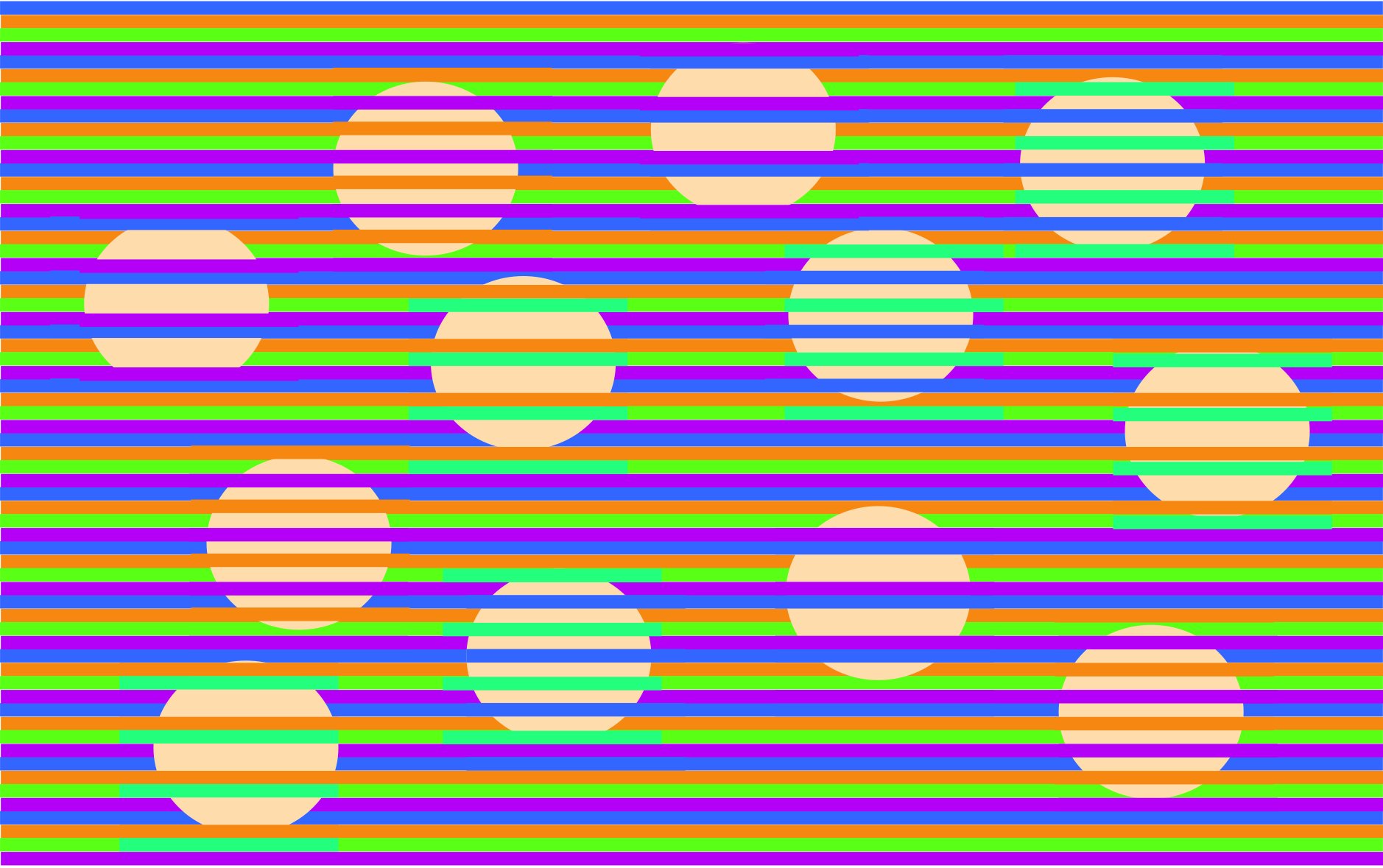World Reacts to UTEP Professor's Optical Illusions
Last Updated on July 24, 2018 at 12:00 AM
Originally published July 24, 2018
By Danny Perez
UTEP Communications
David Novick is a computer scientist by trade whose work in human-computer interaction at The University of Texas at El Paso has drawn its share of oohs-and-aahs, but a recent tangent into optical illusions has made him an internet sensation.

Novick, Ph.D., is the Mike Loya Distinguished Chair in Engineering and a professor of engineering education and leadership. He developed during the past year a series of advanced and complex Munker illusions, which are images where colors may appear different based on shapes and color accents that go through and around the shapes.
Novick’s illusion, which he named “confetti,” showed 12 dots crossed by horizontal strands of colors – blue, orange, green and purple. These lines of color seem to rub off on the circles, giving them different hues. In actuality, each dot is the same color. He decided on the name because the perceived multiple, multicolored circles looked like confetti.
A new Munker illusion, which I call confetti. All the dots in the background are the same color (RGB 250, 219, 172) but are perceived as four different colors. The differences are subtle, though, and depend on the size of the image when it's viewed. cc @AkiyoshiKitaoka pic.twitter.com/vT6x64LLTy
— David Novick (@NovickProf) July 18, 2018
The UTEP professor published his confetti illusion on July 12, 2018, on Twitter. Since then, it has received nearly 17,000 likes and 6,700 retweets as of the afternoon of Tuesday, July 24. Novick said the response to his optical research is a surprise. He meant his work for a research audience, but was pleased that it generated a sense of wonder with so many around the world.
“I didn’t think they would have any impact at all,” said Novick, who has served in various academic and leadership positions at UTEP since he arrived in 1999. “These sorts of illusions are really the domain of specialists in visual perception. My illusions typically get just a few likes. The most popular ones might get 40. The point of disseminating the illusions was to share my research results and correspondingly to get feedback from other people working in this area.”
Media from around the world, including Today.com, MentalFloss.com, UK newspaper The Daily Mail, and the Spanish-language website for Russia Today, have noticed the visual sensation that is reminiscent of “The Dress” color controversy from February 2015. Remember how people argued whether the dress was black and blue or gold and white? The debate stems from how the brain perceives color and fills in the blanks when necessary to make a complete picture.
Novick said his interest in the topic started in July 2017 when he was inspired by the visual illusion work of Akiyoshi Kitaoka, Ph.D., professor of psychology at Ritsumeikan University in Kyoto, Japan. He learned about the topic and then began to explore different ways to express these effects. Confetti was his latest result.
Kitaoka saw Novick’s work and commented on its originality via Twitter. “Magnificent,” the professor wrote on July 18, 2018. That reaction humbled the UTEP faculty member, who said Kitaoka’s praise meant more to him than the thousands of retweets.